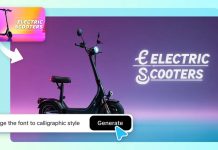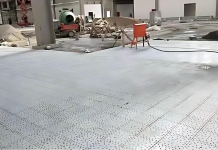Within the domain of securing solutions, stainless steel (SS) screws develop as unparalleled champions, commended for their persevering toughness, uncommon erosion resistance, and unmatched flexibility. However, it’s not only their material composition that sets them apart; rather, it’s the fastidious plan subtleties that characterize their ability over a bunch of applications.
From string geometry and head fashion to drive sort and shank plan, each feature of the SS screw plan is meticulously made to optimize execution, reliability, and usefulness. Whether securing basic infrastructure in harsh marine situations or embellishing smooth structural structures, SS screw epitomizes designing brilliance, consistently mixing shape with work. As vital components in modern development, fabricating, and building endeavors, SS screws proceed to illustrate their unparalleled capacity to resist the test of time while delivering unparalleled execution over differing applications.
The Impact of SS Screw Plan on Execution: Building Brilliance Revealed
In the realm of securing arrangements, stainless steel (SS) screws rule incomparable for their toughness, erosion resistance, and flexibility. In any case, past fabric composition, and the plan complexities of SS screws play an essential part in deciding their execution over different applications. This article digs into the multifaceted domain of SS screw plan, investigating how components such as string geometry, head style, and drive sort affect usefulness, unwavering quality, and proficiency.
Thread Geometry
The plan of the screw’s strings is foremost to its execution. The pitch, depth, and profile of strings impact grasp quality, resistance to extricating, and ease of inclusion. Coarse strings offer a stronghold in milder materials, whereas fine strings exceed expectations in denser substrates. Furthermore, specialized string plans, such as self-tapping or self-drilling strings, upgrade effectiveness in particular applications, diminishing the requirement for pre-drilling and encouraging quicker get-togethers.
Head Style
The head style of SS screws changes broadly, each catering to specific useful and aesthetic necessities. Common head styles incorporate container, level, oval, and truss heads, each advertising particular benefits in terms of stack dispersion, flushness, and availability. For applications requiring a smooth appearance or negligible bulge, countersunk or flush heads are favored, whereas domed heads give an expanded bearing surface and tasteful offer in visible establishments.
Drive Type
The drive sort of SS screws decides the instrument required for establishment, affecting effectiveness, torque transmission, and resistance to altering. Prevalent drive sorts incorporate Phillips, opened, Torx (star), hex attachment (Allen), and square drive (Robertson). Each drive sort offers interesting advantages, such as expanded torque exchange (Torx), diminished cam-out (hex attachment), or improved alter resistance (square drive), permitting engineers to tailor securing arrangements to particular execution criteria.
Material Choice
Beyond the stainless steel review, the choice of materials for SS screws expands to coatings and platings planned to upgrade execution and life span. Common coatings incorporate zinc plating, dark oxide, and natural coatings, each advertising changing degrees of erosion resistance, lubricity, and stylish offer. Moreover, specialized coatings, such as Teflon or ceramic, include grease and wear resistance, advancing optimizing execution in requesting situations.
String Shaping vs. String Cutting
SS screws can utilize either thread-forming or thread-cutting strategies to form strings within the mating material. Thread-forming screws uproot material to form strings, advertising expanded resistance to vibrational releasing and moved forward string engagement. In differentiation, thread-cutting screws expel fabric to create strings, giving higher pliable quality and better string pitch alternatives.
Shank and Point Design
The design of the screw’s shank and point impacts insertion ease, string engagement, and pull-out resistance. Shank plans may include decreased, cylindrical, or fluted profiles, each optimized for particular substrates and applications. Additionally, point plans, such as limit, sharp, or self-drilling focuses, direct beginning infiltration, and chip evacuation effectiveness, guaranteeing secure securing with negligible exertion.
Stack Distribution and Stretch Management
Compelling stack dissemination and stretch administration are basic contemplations in SS screw plan, especially in high-load or energetic applications. By optimizing string pitch, length, and dividing, engineers can guarantee uniform stretch conveyance over the affixed joint, minimizing the chance of untimely due to weariness or overemphasizing.
Aesthetic Considerations
In expansion to functional necessities, the SS screw plan regularly consolidates stylish contemplations, especially in unmistakable establishments or buyer items. Head styles, wraps-up, and drive sorts are chosen not as it were for their execution qualities but also for their visual offer and compatibility with by and large plan aesthetics, guaranteeing that latches complement the wrapped-up item or structure.
Conclusion
The plan of SS screws applies a significant impact on their execution, unwavering quality, and flexibility over different applications. By fastidiously optimizing string geometry, head fashion, drive sort, fabric choice, and other plan parameters, engineers can tailor SS screws to meet particular execution criteria, from stack dispersion and push administration to aesthetics and ease of establishment.













